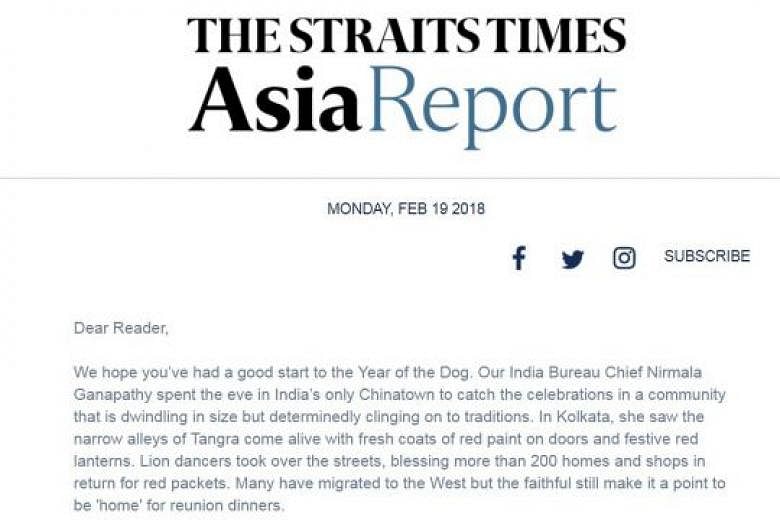The Straits Times is expanding its network of overseas correspondents to ramp up its coverage of developments across Asia and globally.
The strengthening of its bureaus and the Foreign Desk team in Singapore is aimed at expanding the 172-year-old flagship daily's readership and reach as an authoritative observer of events that matter to South-east Asia and its people.
China is a major area of focus, and former political journalist Danson Cheong will join China bureau chief Goh Sui Noi and China correspondent Lim Yan Liang at the Beijing bureau next month. China correspondent Chong Koh Ping, who has been in Beijing for the past two years, will move to Shanghai to helm business and economic stories out of the financial hub.
Former Business Times correspondent Claire Huang will be Hong Kong correspondent.
Regional correspondent Tan Hui Yee, who has been based in Bangkok since 2012, will be Indochina bureau chief overseeing coverage of events in Thailand, Myanmar, Cambodia, Laos and Vietnam. Her reporting on the Rohingya crisis last year, which brought home the tragedy of the refugee exodus, was recognised at the Singapore Press Holdings' (SPH) English/Malay/Tamil Media (EMTM) group annual awards last month. She will be joined in Bangkok by Thailand correspondent Jitsiree Thongnoi.
Former political correspondent Charissa Yong will be regional correspondent, and report on regional trends and Asean in a year when Singapore chairs the regional grouping.
As Malaysia heads to the polls, the bureau led by Mr Shannon Teoh will provide the latest updates and analyses, including on a dedicated microsite. Joining correspondents Trinna Leong and Nadirah Rodzi are South-east Asia editor Reme Ahmad and regional correspondents Leslie Lopez, Arlina Arshad and Nur Asyiqin Mohamad Salleh.
Mr Warren Fernandez, editor-in-chief of the SPH's EMTM group and editor of The Straits Times, said: "We have been building this network of overseas correspondents over the years, and it has established a reputation for reporting and interpreting developments in an objective and insightful manner.
"They provide insider insights into what is going on in Asia and help readers make sense of a fast-changing region and what this means for them."
The newspaper currently has a total of 23 correspondents in 10 overseas bureaus. It also has correspondents in Jakarta, Manila, New Delhi, Seoul, Tokyo, Washington and London. Further additions are planned for the United States, India, Indonesia and Malaysia, while several correspondents will be based in Singapore to do pan-Asian stories on issues ranging from climate change to free trade pacts.
This ST network will be complemented by freelance contributors based around the world, who will be tapped when a story breaks in the countries they are in.
The expansion is among several efforts to serve a wider pool of subscribers in Singapore and abroad. Those accessing The Straits Times' website from outside Singapore will be directed to a revamped international homepage at https://www.straitstimes.com/global
A weekly Straits Times Asia Report newsletter has also been rolled out for every Monday evening. It gives subscribers highlights of correspondents' reportage from across the region every week. To sign up, go to str.sg/stnewsletters
The Asia Report also has a bimonthly magazine and a Facebook page with regular updates on regional news at https://www.facebook.com/STAsiaReport


